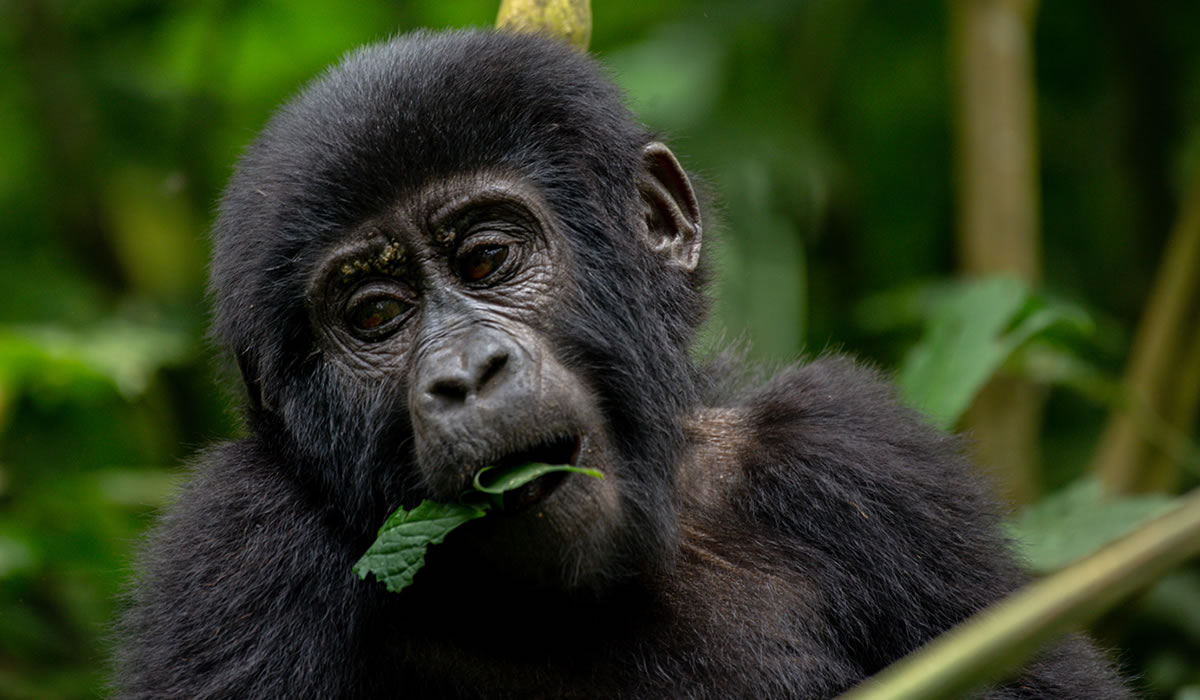Located in the southwestern corner of Uganda, Bwindi Impenetrable National Park is one of Africa’s most biodiverse and captivating natural destinations. Recognized as a UNESCO World Heritage Site in 1994, this ancient rainforest is renowned not only for its ecological richness but also for being one of the last remaining habitats of the endangered mountain gorilla. Spanning over 321 square kilometers, the park lies on the edge of the Albertine Rift and is characterized by steep ridges, dense vegetation, and a tapestry of flora and fauna that has thrived for over 25,000 years. For nature lovers, adventure seekers, and wildlife enthusiasts, Bwindi offers an unforgettable journey into the wild.

Wildlife and Biodiversity
The crown jewel of Bwindi Impenetrable National Park is undoubtedly its population of mountain gorillas. As of the latest estimates, the park is home to over half of the world’s remaining mountain gorillas, making it the most reliable place in the world to encounter these majestic primates in their natural habitat. Gorilla tracking is the primary attraction and the main reason why travelers from around the world flock to Bwindi each year.
Beyond gorillas, Bwindi boasts a remarkable array of biodiversity. It shelters around 120 mammal species, including forest elephants, bush pigs, giant forest hogs, duikers, and several species of monkeys such as the black-and-white colobus, L’Hoest’s monkey, and the blue monkey. Birdwatchers are also in for a treat, with over 350 bird species recorded in the park. Notably, 23 of these are endemic to the Albertine Rift, including the African green broadbill, Shelley’s crimsonwing, and the handsome francolin. The forest is also a haven for over 200 butterfly species and more than 1,000 plant species.
Activities in Bwindi Impenetrable National Park
1. Gorilla Trekking
Gorilla trekking is the most iconic activity in Bwindi. Treks typically begin early in the morning, following a briefing at one of the park’s visitor centers—Buhoma, Ruhija, Rushaga, or Nkuringo. Visitors are led by experienced guides and trackers through thick undergrowth, misty hills, and rugged terrain in search of one of the habituated gorilla families. Encounters with these gentle giants are strictly limited to one hour, ensuring minimal disturbance while offering an awe-inspiring experience. Permits are required for this activity and should be booked well in advance due to high demand.
2. Gorilla Habituation Experience
For those seeking a more immersive experience, the gorilla habituation experience allows visitors to spend up to four hours with a gorilla group undergoing habituation, a process that makes gorillas more accustomed to human presence. This activity is more demanding and suited for adventurous travelers looking to gain deeper insights into gorilla behavior and conservation.
3. Bird Watching
With its diverse ecosystem and high number of endemic species, Bwindi is a paradise for bird watchers. The Buhoma and Ruhija sectors are particularly popular for birding excursions, offering a chance to spot rare and elusive species. Local guides with deep knowledge of the terrain and bird calls enhance the experience, making sightings of species like the Grauer’s warbler, African wood owl, and yellow-eyed black flycatcher more accessible.
4. Forest Walks and Nature Hikes
Several trails crisscross the forest, offering short walks and longer hikes that reveal the beauty of the rainforest and its wildlife. Notable among them is the Munyaga River Trail, which is ideal for spotting primates and waterfalls. The Waterfall Trail leads hikers through dense vegetation to stunning cascades, while the Ivy River Trail and the Buhoma-Nkuringo trail provide more extensive treks with sweeping views of the forest and surrounding villages.
5. Cultural Encounters
Bwindi is surrounded by local communities, including the Batwa pygmies, the original forest dwellers who have lived in harmony with nature for centuries. Cultural visits allow travelers to experience the traditions, music, dance, and storytelling of these indigenous people. Guided tours through nearby villages include visits to local schools, banana brewing demonstrations, and traditional medicine practices.
Best Time to Visit Bwindi
Bwindi Impenetrable National Park can be visited year-round, but the best time to visit generally falls within the two dry seasons: from June to August and December to February. During these months, trails are less muddy and more navigable, making trekking easier and more enjoyable. These dry periods are also when gorilla sightings tend to be more consistent.
The wet seasons, from March to May and September to November, see fewer tourists and offer lush, vibrant scenery. However, heavy rains can make the trails slippery and challenging to hike. Bird watching is particularly rewarding during the wet seasons, as migratory species are present and resident birds are more active.
Where to Stay
Accommodation in and around Bwindi caters to a wide range of budgets, from luxury lodges to mid-range hotels and budget-friendly guesthouses. The park is divided into four main sectors—Buhoma, Ruhija, Rushaga, and Nkuringo—and travelers are advised to book accommodation near the sector where they’ll be tracking gorillas to avoid long morning drives.
Luxury Lodges
- Bwindi Lodge (Buhoma): Eco-friendly and luxurious, offering stunning views and personalized service.
- Clouds Mountain Gorilla Lodge (Nkuringo): Perched on a ridge with panoramic views, this is among the most luxurious stays in Uganda.
- Sanctuary Gorilla Forest Camp (Buhoma): Located within the park itself, offering a rare opportunity to stay inside the forest.
Mid-range Options
- Ichumbi Gorilla Lodge (Rushaga): Comfortable rooms with easy access to the Rushaga sector.
- Silverback Lodge (Buhoma): A solid choice for affordability and proximity to the park headquarters.
Budget Accommodation
- Bwindi View Bandas (Buhoma): Basic yet cozy, with easy access to gorilla trekking starting points.
- Broadbill Forest Camp (Ruhija): An affordable and scenic option for birders and hikers.
How to Get There
Bwindi Impenetrable National Park is located approximately 530 kilometers from Kampala, Uganda’s capital. Depending on budget and preference, visitors can choose between road or air travel.
By Road
The most common way to reach Bwindi is by road. The journey from Kampala takes about 8 to 10 hours by car, depending on road conditions and the sector of the park you’re visiting. The route typically passes through Mbarara, Kabale, or Kisoro towns. While long, the drive is scenic and offers glimpses into Uganda’s countryside and cultural landscape.
Travelers coming from Queen Elizabeth National Park can also access Bwindi through the Ishasha sector, famous for its tree-climbing lions, which makes for a convenient detour on a longer Ugandan safari circuit.
By Air
Chartered and scheduled flights are available from Entebbe International Airport or Kajjansi Airstrip near Kampala to Kihihi or Kisoro airstrips, which serve the northern (Buhoma) and southern (Rushaga, Nkuringo) sectors of the park, respectively. From the airstrips, a road transfer of 1 to 2 hours is required to reach the lodges.
Domestic flight providers like Aerolink Uganda and Bar Aviation operate these routes, making air travel a faster though more expensive option.
Conservation and Responsible Tourism
Visiting Bwindi comes with a responsibility to support its fragile ecosystem. Gorilla permits are priced at a premium (currently $800 USD per person for non-residents), but these fees go directly toward conservation efforts and community development. By trekking responsibly, keeping a respectful distance, avoiding flash photography, and following guide instructions, visitors help ensure the continued survival of the mountain gorilla.
Eco-lodges in the area also contribute to sustainable tourism by employing locals, sourcing produce nearby, and investing in conservation education. Travelers are encouraged to minimize waste, avoid single-use plastics, and support community-run initiatives during their stay.
Bwindi Impenetrable National Park is a treasure trove of natural wonder and cultural richness. From the thrilling encounter with mountain gorillas to the serene beauty of its forest trails and the warmth of its local communities, every aspect of a visit to Bwindi promises a profound and moving experience. Whether you are drawn by wildlife, adventure, or the allure of remote landscapes, Bwindi stands out as one of Africa’s most rewarding destinations—a journey into the heart of the wild that leaves an indelible mark on the soul.

